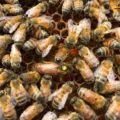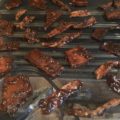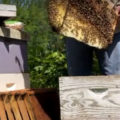The principles behind storing wine are neither difficult to understand nor to achieve. If you can’t achieve all factors, then some are better than none. I have set forth to build my own wine cellar and here is what I have learned.
Since wine is alive, it reacts either positively or negatively to its environment. How it is treated will determine how fast or slow it ages and how it will turn out in the end. Wine wants to be kept in a clean, dark, damp place with good ventilation, where it can be stored, vibration free, at a constant temperature.
Temperature is the most important factor that should be sought after above all others. The ideal temperature is 50 to 55F. You will get different opinions depending on who you talk to. However, any constant temperature within 40-65F will do.
More important than the actual temperature you will be able to achieve, is the degree and speed of temperature fluctuation the wine is subjected to. A slow change of temperature of ten odd degrees between winter and summer is not a big deal. But this kind of fluctuation on a daily or weekly basis will cause damage to your wines and age them prematurely.
You will notice damage of this nature from the sticky deposit that often forms around the capsule. In time, as the wine expands and contracts, it will damage the integrity of the cork. When this happens, small quantities of wine may make its way alongside the cork even allowing oxygen back in.
Wines kept at too high a temperature will age faster than wines kept at a cold temperature. Theoretically, wines kept at 68F will age twice as fast as those kept at 50F. At 55F wines will age so slowly–with ultimately greater complexity–that you will never have to worry about them. This is not to say the colder the better. Wine that is stored too cold can develop deposits or other suspensions in the wine. White wines are affected far more than red wines by temperature problems.
Moderate humidity is important so as to keep the corks in good condition and thereby preventing them from shrinking. A relative humidity of 50-80% is the acceptable range, but about 70% is recommended. Excessive humidity will not harm the wine but will cause the labels and any other paper products–like cardboard cases and boxes–also present in the cellar to rot. Insufficient humidity may cause the corks to dry out, lose their elasticity and thereby allow air to get into the bottle. Bummer, especially on a $500 bottle of cabernet that I don’t have… but would like to try.
Light will prematurely age a bottle of wine. Naturally, clear bottles are most susceptible to this problem, but ultraviolet light will penetrate even dark colored glass. Ultraviolet light can even give a wine an unpleasant aroma and ruin it. Extra care should be given to sparkling wines as they are more sensitive to light than other wines. It should be noted too, that incandescent or sodium vapor lights are better for a celler than fluorescent lighting.
Calmness… Believe it or not, constant vibration from machinery or even a nearby road disturbs a red wine’s sediment and can be harmful to all wine. This is not a common problem in the average home as extremes are rare and obvious… not to mention bad for the wine. It should be remembered that excessive sound creates vibrations that are harmful as well.
Wines should be stored in such a way that you don’t have to move them around to get at a particular bottle. Once a wine is laid down, it should stay there until it is opened.
Clean and Airy… Keep your cellar clean. Extraneous smells can enter through the cork and contaminate the wine. Proper ventilation will help with this problem and keep the cellar from giving the wine a musty taste. Finally, debris that could be a home to insects that might infect the corks i.e. untreated wood, food, etc. should be removed. Never store fruits, vegetables, cheeses or any other food that is capable of fermenting.
Angle of Storage… Table wine is stored horizontally so that the wine stays in contact with the cork. This keeps the cork moist thereby preventing air from entering the wine. Fortified wines other than port, are stored standing. If bottles are stored with the labels up, it will be easier to see the deposit of sediment that forms on the opposite side of the bottle when it comes time to open it.
This is it for now. These ideas are my thoughts, some of my experiences and even factual information about wine cellars gathered via the wonderful Internet. I plan to maintain this information through time and I will update you along with pictures of my process over the next year.




Leave a Reply